The last notes of carilloneur Auke de Boer
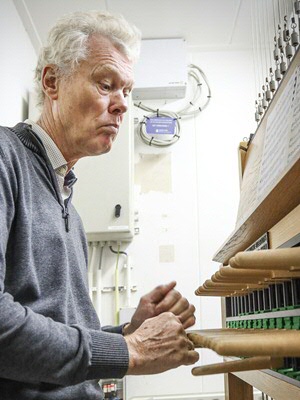
Invisible yet unavoidable. That is Auke de Boer, carilloneur of the UG. On Tuesday, December 21, between 3 and 4 p.m., he will play the RUG carillon for the last time. The head chef within the Dutch carillon world tells us about his ‘pots of snert’ (pea soup).
Text: Eelco Salverda, Communication UG / Photos: Henk Veenstra
For 25 years, Auke de Boer has reported to the Academy Building every Tuesday at 8.50 a.m. He then begins his journey up to the carillon of the Academy tower. Up via the stone staircase, through the office of the Honours College, and further via an iron spiral staircase, inside the walls of the otherwise hollow Academy tower towards an attic, continuing up over little wooden stairs, only to finally end up in a small room, high up between the dusty rafters and the roof construction, a large amount of flies as his only company.
Frequent guest
There he sits, carilloneur of the UG. In September, De Boer said goodbye to the carillon of the Martini tower and the Municipality of Groningen following his retirement. His last time playing at the Academy Building will be in December. He used to play the carillon between 10 and 11 a.m. every Tuesday, briefly pervading the lives of everyone who was in the city centre at that time. The sounds of the carillon provided enjoyment, happy recognition, and amazement about the unexpected songs, as well as occasional annoyance.

Cast in eternity
De Boer is not someone who only lets his hands do the talking, as we learn during the journey upstairs. On the way up, he pauses at an old A4 paper sheet. Every bell is described there: number, tone, diameter (24.3 to 76.3 cm), weight, position within the carillon, and the name of the person or institution who donated the bell. This last column contains well-known names and institutions: the Board of the University (the biggest bell), staff members of the Office of the University of Groningen, the Province of Groningen, a few from the private sector. They have bought a place for eternity. ‘Each bell states who gifted it’, says De Boer. ‘And a carillon lasts for ages. It really does not suffer much from any external factors. Except for air pollution, which affects the bronze and is bad for the sound. Luckily, this is not such a big issue in the North.’
A pot of pea soup
A carillon such as this is a special instrument because in essence it is never really finished. ‘You could keep adding bells forever. You are, however, limited by the amount of available space. But here, for example, some small extra bells would fit.’ De Boer does not think this is necessary though, as he is content with the carillon as it is now. ‘A bell, it is really like a pot of pea soup. You can taste it when a certain ingredient is too present. A bell has several sounds; one should not be more dominant than the other. Bells need to sound good themselves and the interaction with the other bells needs to be good too.’
Different sound
These 25 bells have not been here that long. The carillon was created on the initiative of the professorial Representatiefonds of the UG, on the occasion of its 100th anniversary. ‘The president, Professor Hendrik de Waard, and his brother Romke, who is also a carilloneur, wanted to place a carillon in this tower. However, they decided it should have a scientific edge. At the Eindhoven University of Technology, a bell profile was developed where the fifth harmonic overtone is not the traditional minor, but the major third partial. This gives the bells a somewhat metallic sound. This knowledge has been applied when casting the bells.’ The UG is not the only University with a carillon, says De Boer. ‘But we are the only one with a real tower. Former Rector Magnificus Frans Zwarts always loved to give reminders of that.’
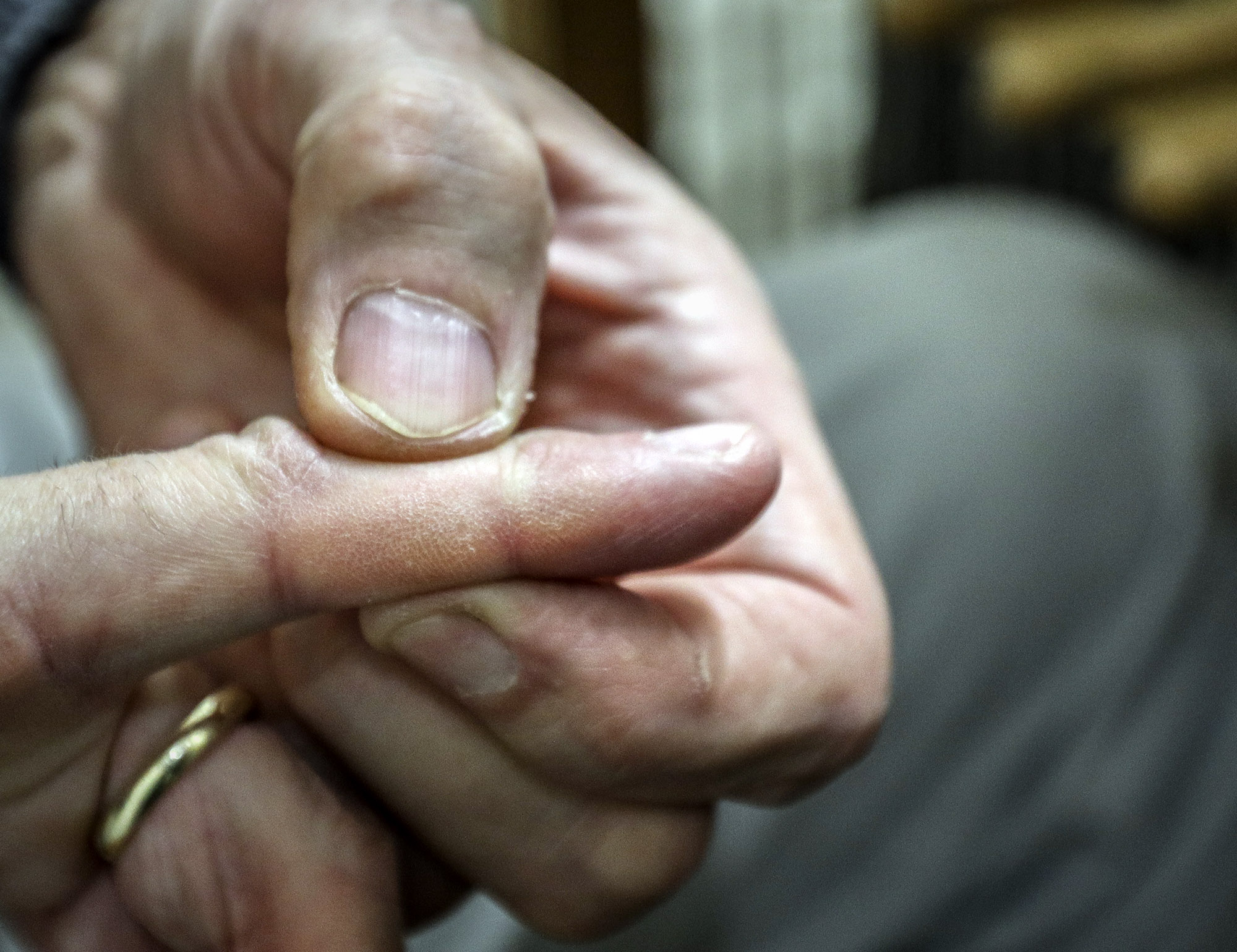
Calluses on the pinky finger
De Boer plays the bells by hitting the baton keyboard. He does this with the side of his hand. ‘This is where I have muscle definition’, says De Boer, showing the calluses on his pinky finger. ‘The Martini tower carillon really makes me work for it. Those are heavier clappers, and I have to hit the keyboard pretty hard for them. But did you know that in New York, there is a bell weighing 20 tonnes? For that one, you have to hit the keys really hard.’
No audience
It is an odd thought. So invisible yet so present throughout the years. Isn't it lonely to play in a tower? Doesn't a musician flourish from the interaction with their audience? ‘I also interact with the audience, just in a different way. Not everyone appreciates the carilloneur's work, so sometimes I get negative emails, but usually those are about the carillon's short automatic chiming every half hour. People usually tell me if they did not hear anything on a certain day, and I know that the staff members in the Academy Building have little competitions about who can recognize the most songs. I also get requests for songs. One request from a UG researcher from Georgia led to me ending up on the Georgian news broadcast.’ Because even though De Boer has no direct audience, he is definitely heard. As a famous carilloneur, he travels the world. From America to Japan, where he stayed for a month to play three times a day in Holland Village Huis ten Bosch, a theme park with replicas of Dutch buildings. De Boer might not have any swooning fans, but he can truly be called an international star.
From the Stones to Hazes
A more famous celebrity, from the pop world, appreciated his work as well: Rolling Stones lead singer, Mick Jagger. During the Rolling Stones exhibition at the Groninger Museum, De Boer played songs by the band. A recording of this ended up in Mick Jagger's hands, who posted it on his social media, after which De Boer went ‘viral’. This led to reactions and invitations from all over the world. Pop star Lou Reed and his wife Laurie Andersen had previously honoured De Boer, as early as 2008, with a visit to the Martini tower. ‘Carillons have a bit of an old-fashioned image. This is why I have been playing pop music for some time. Even though this is not always easy. Many songs by the Stones have a monotonous melody, one that revolves around one note. Those are not suitable, as there is not enough melody. But someone like André Hazes, that's easy to do. Or The Beatles, also ideal.’
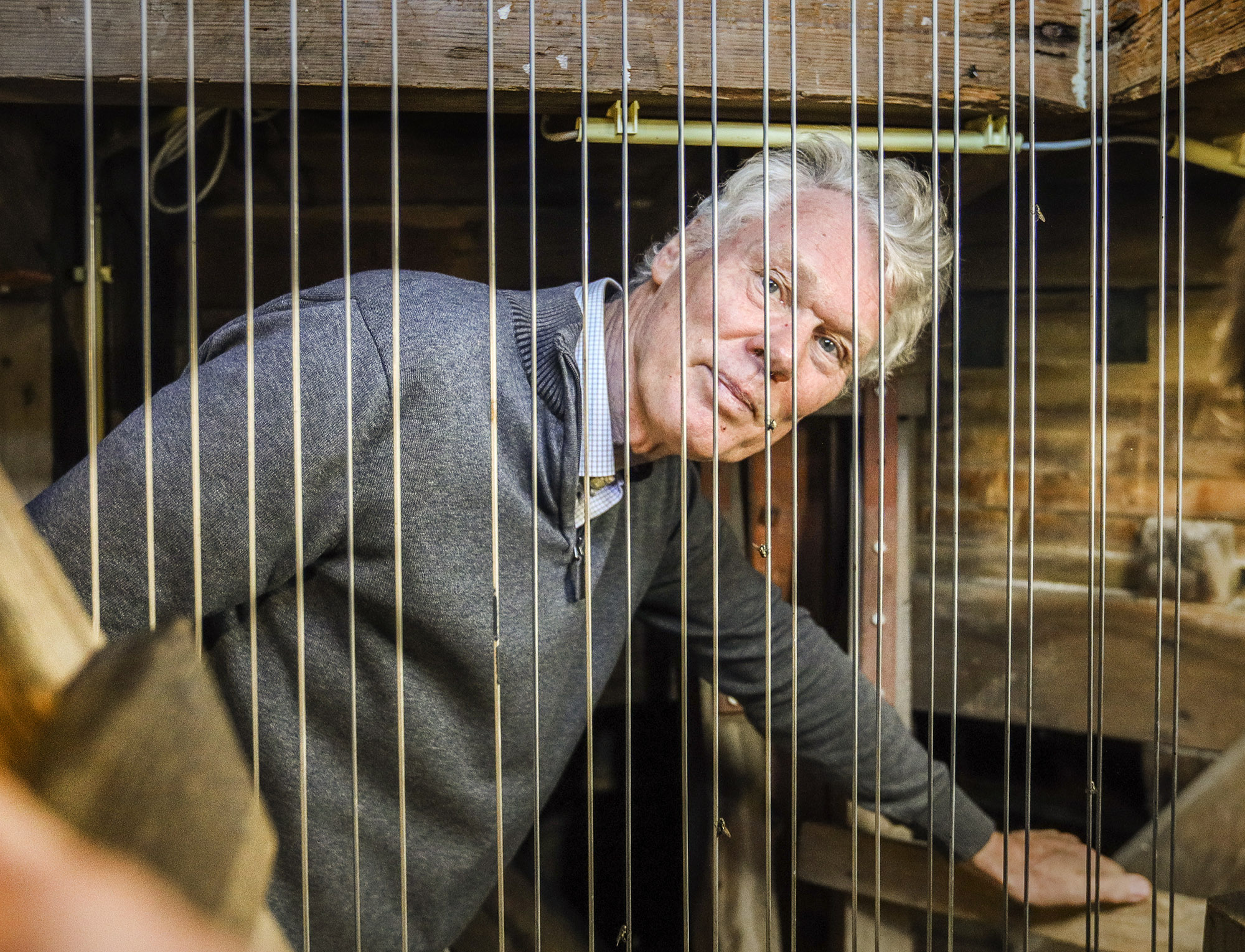
Part of the UG
After all these years, De Boer feels he’s become part of the UG family. ‘I was appointed in 1996 and have been able to shape my job from the beginning. I always enjoyed thinking about the academic function of the carillon. I once proposed to place one at the Zernike Campus as well, and to organize the campus around it. That's what they do in the USA. Not only do I play for an hour every Tuesday, I also play during the Christmas Drinks event, the opening of the academic year, the awarding of honorary doctorates, receptions, and sometimes during PhD ceremonies if they involve a musical topic.’ He is no longer nervous. A modest smile graces his face. ‘Well, after 30 years, you no longer get stressed as easily.’ That being said, when the royal family visited Groningen on King's Day, the NOS broadcasted his music live. ‘It was so beautiful. Such publicity is good for the instrument.’
Resonating
He turns towards his keys, a little bit sideways – there is barely enough space for his long legs. He puts on his glasses, a tense look on his face, as his hands begin to move. Sometimes pressing, sometimes drumming, as if he is playing a bongo drum. ‘This piece is from 1525, when the first carilloneur was appointed in Groningen. The sound is just as fresh, right?’ In between musical pieces, he continues dishing out anecdotes. About his lecture ‘The real heavy metal’, during which he would make children interested in carillons, about the development of bells in ancient China and how they spread through Europe, about what the function of carillons used to be, about the Dutch nursery rhyme Kortjakje, which goes by the tune of 'Twinkle, twinkle, little star’ (‘which is actually the first world hit, did you know?’) Auke de Boer has almost finished with playing music at the UG. However, his stories about the bells will resonate for a long time.
Would you like to listen?
On Tuesday 14 December, De Boer will play songs requested by UG staff and students between 10 and 11 a.m,
initiated by UKrant. The playlist is on the Ukrant site.
On Tuesday, December 21, between 3 and 4 p.m., De Boer will play the RUG carillon for the last time.
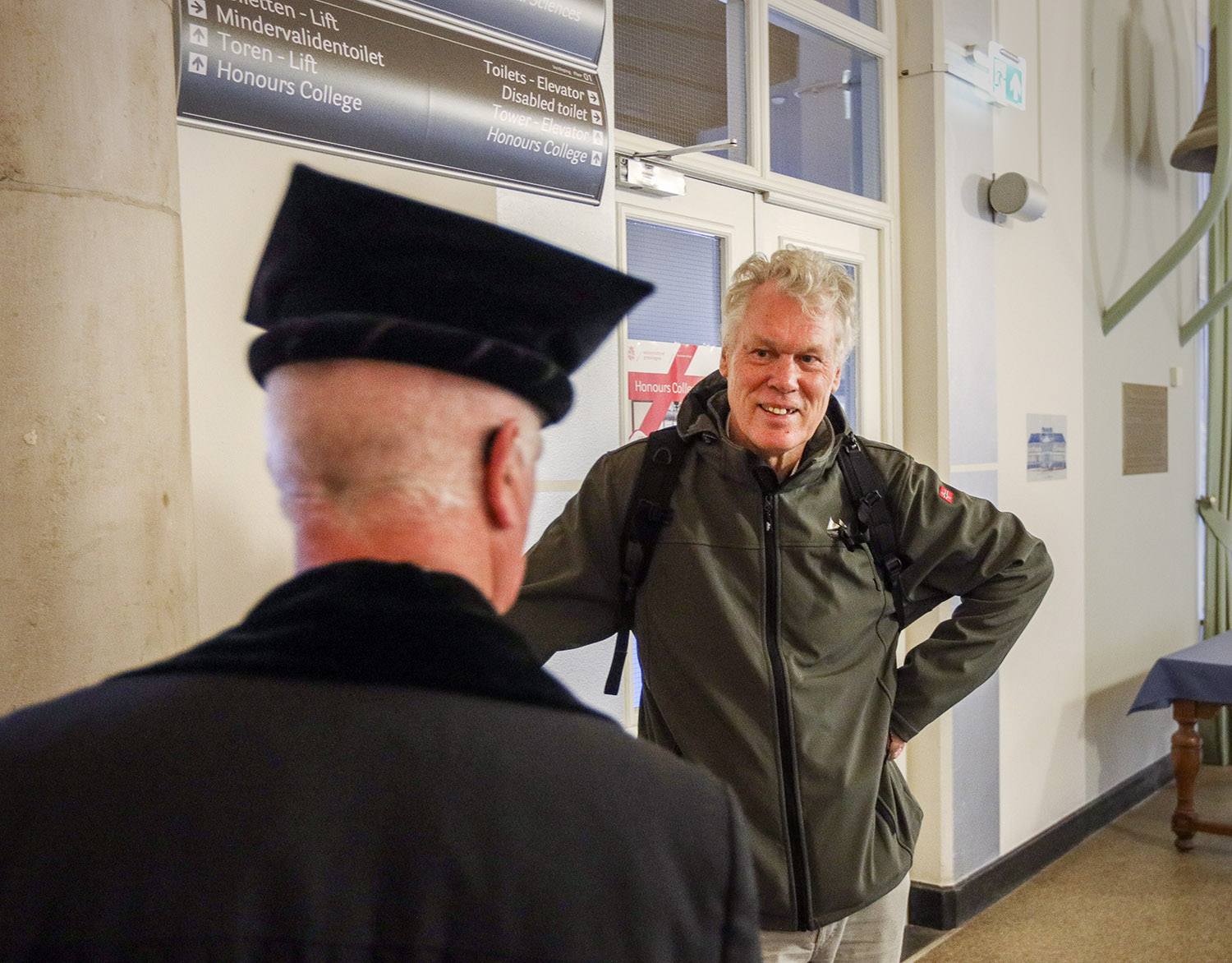
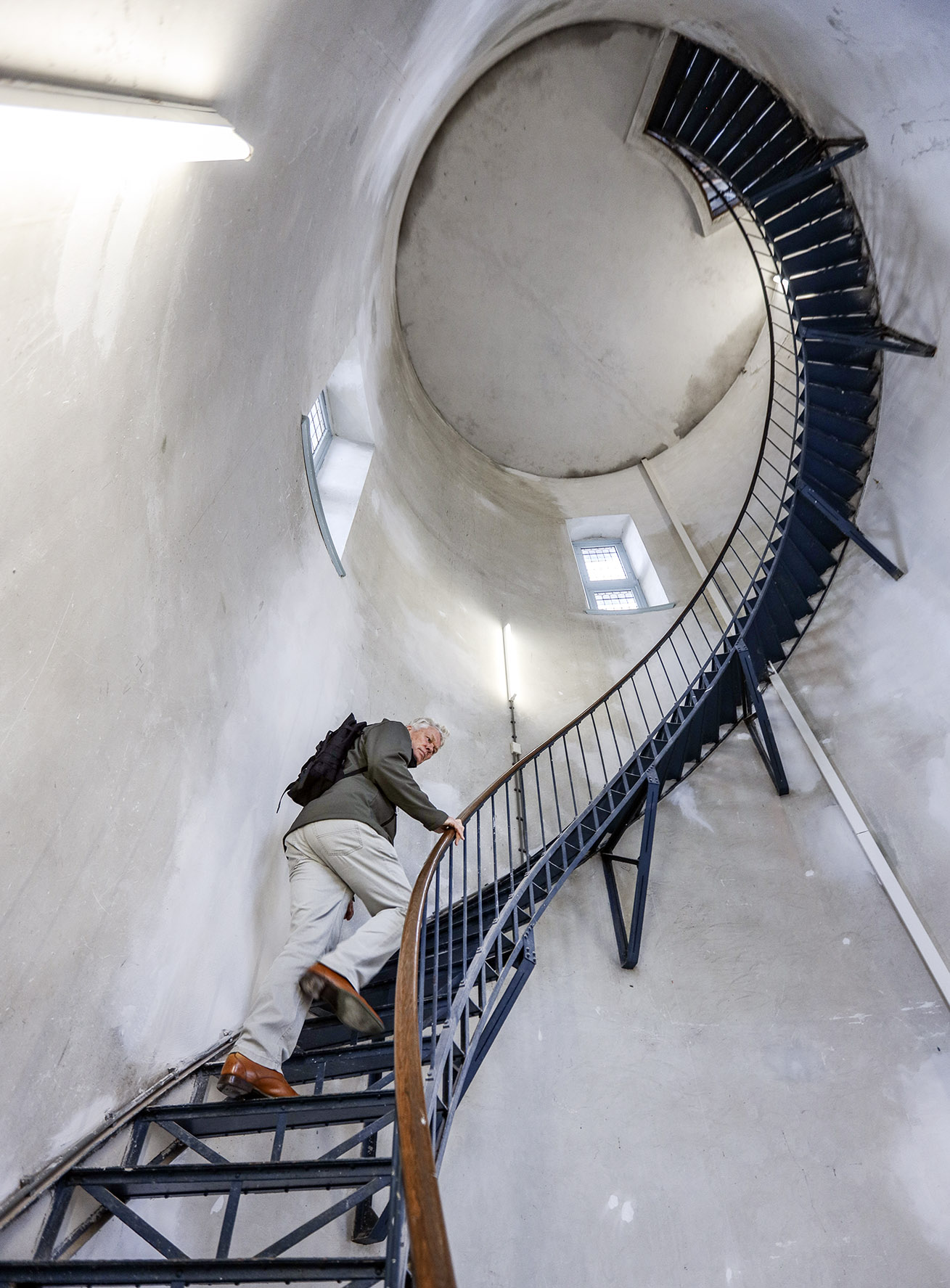
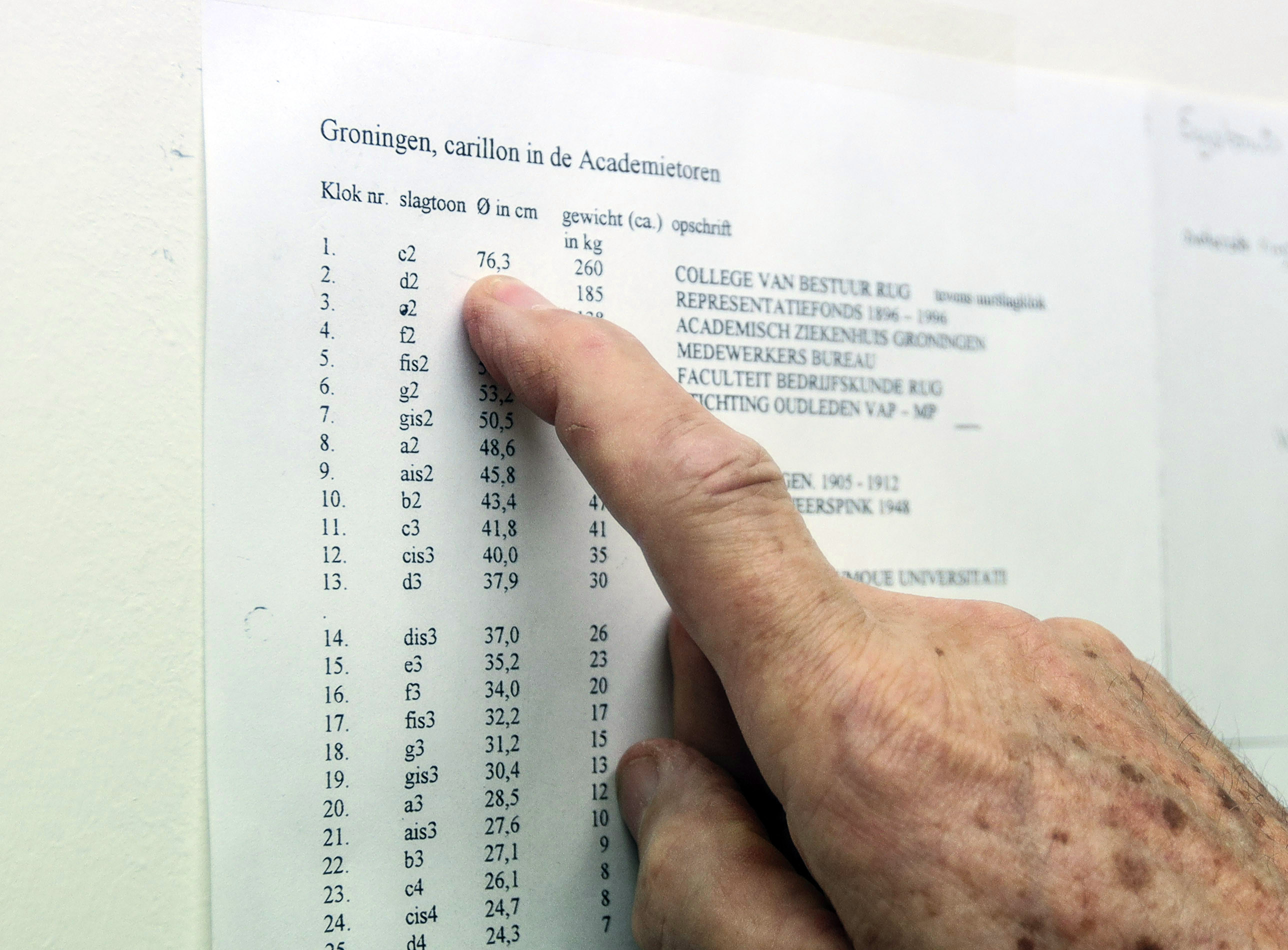

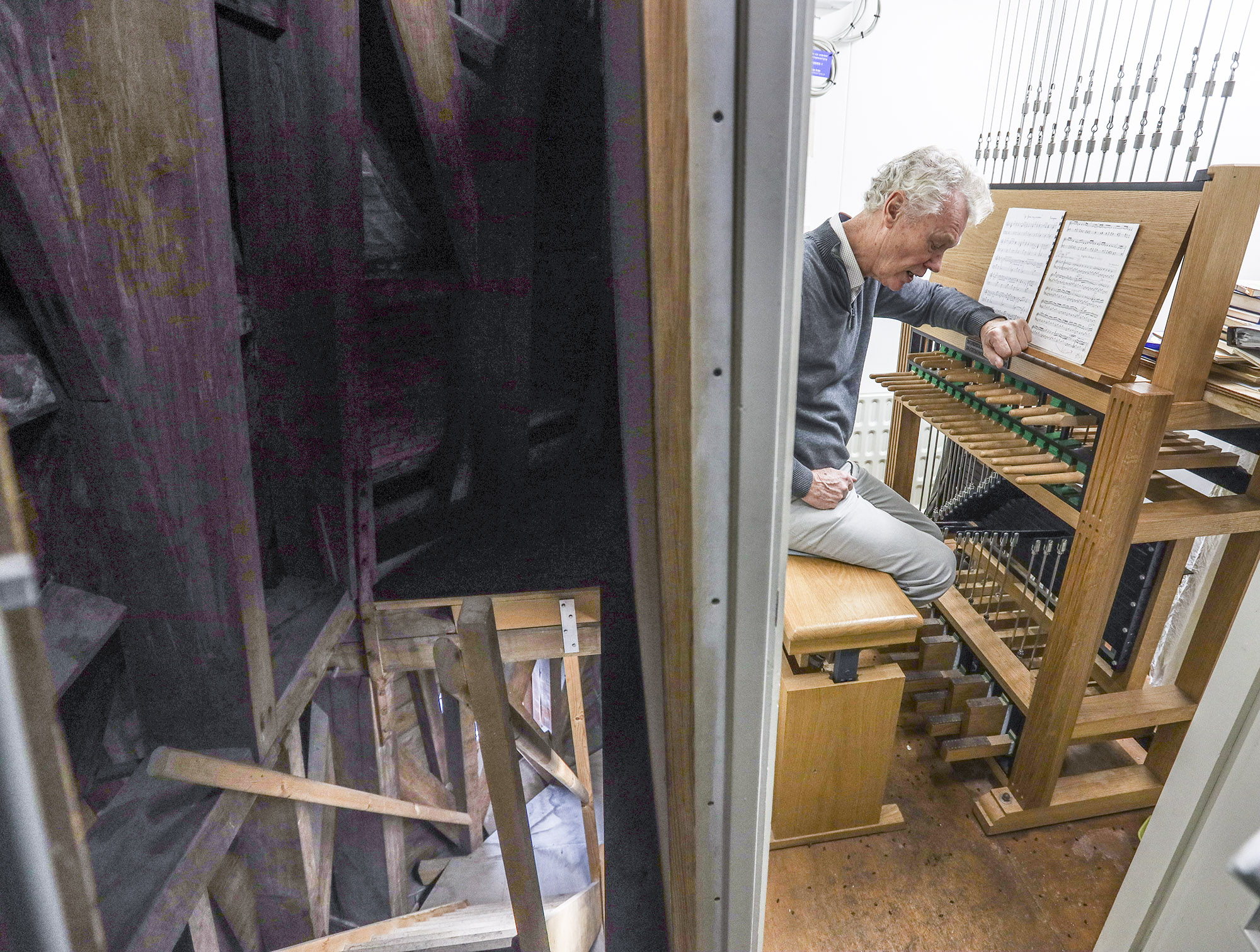
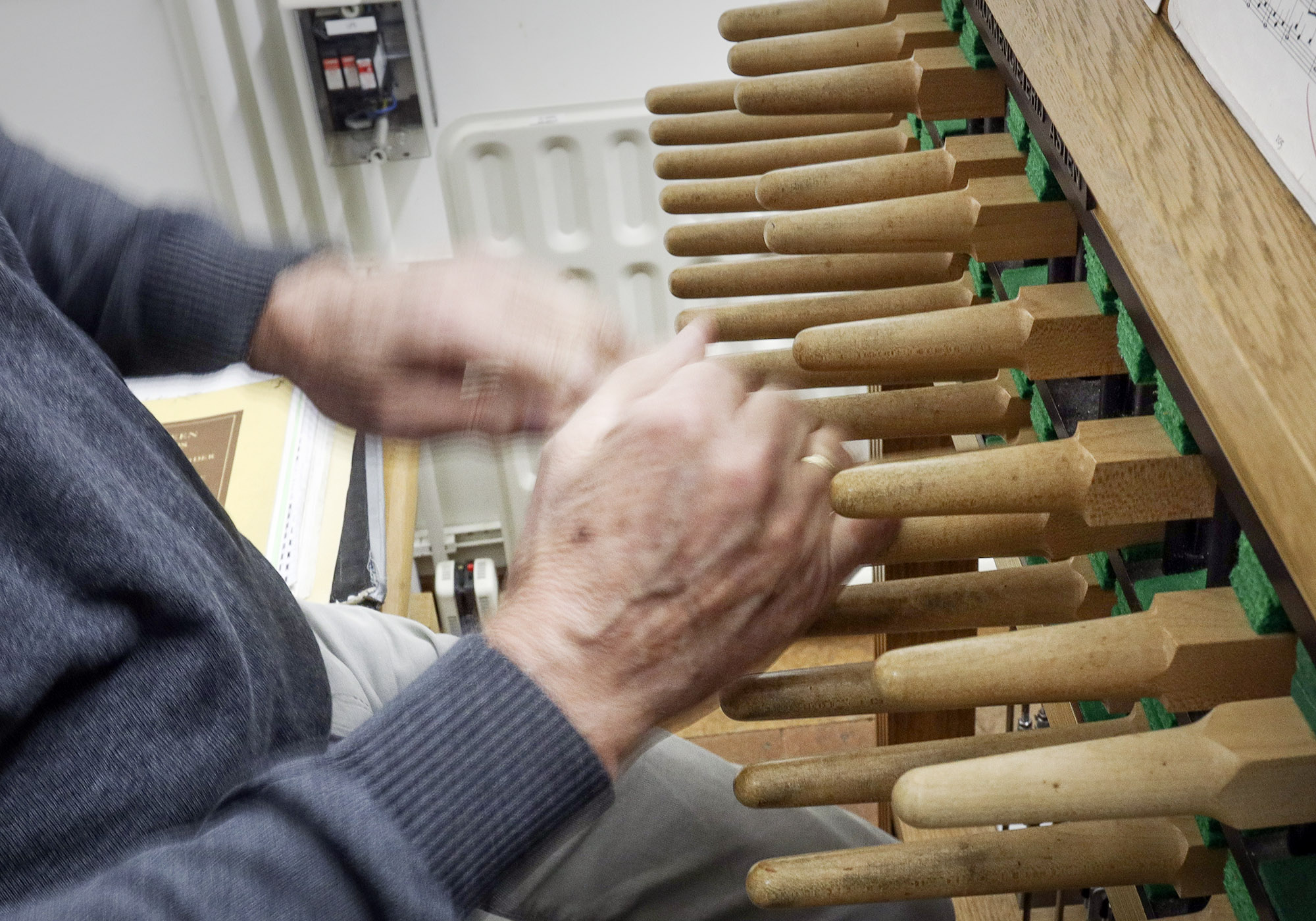
More news
-
15 September 2025
Successful visit to the UG by Rector of Institut Teknologi Bandung
